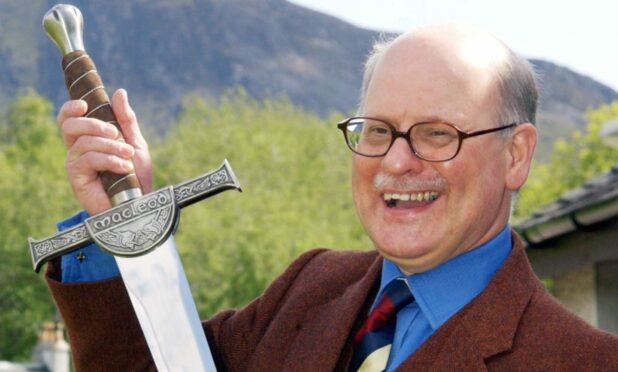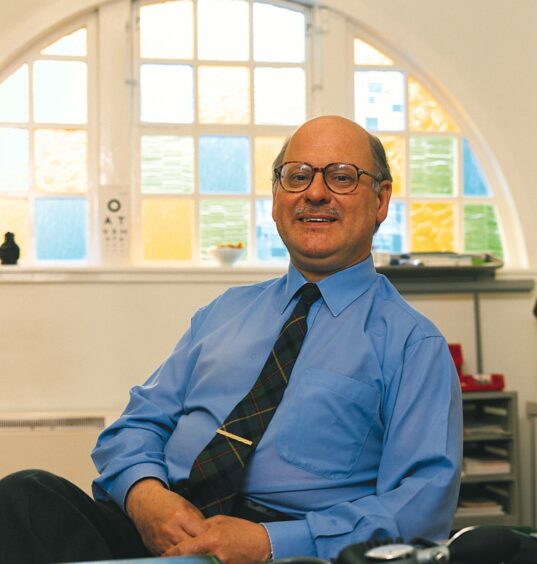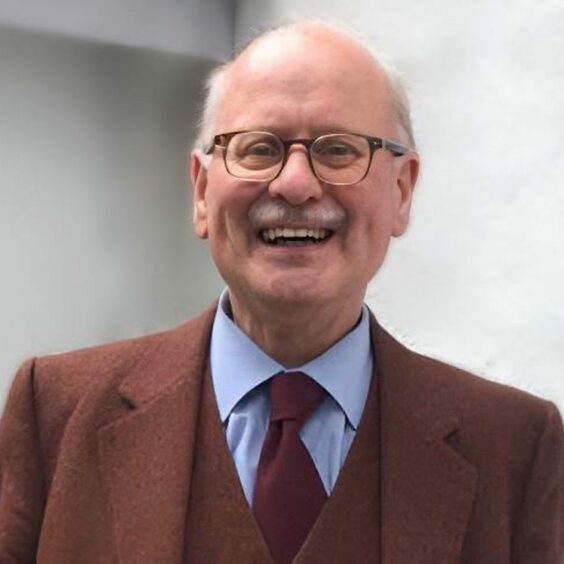Army medic, Ballachulish and Glen Coe “single-handed” GP, author, husband, father and grandfather Dr Roddy Macleod MB ChB has died aged 77.
The quick-witted doctor, known for his strong political convictions and dedication to medicine, hailed from Skye.
Island life
Roderick was born on the Isle of Skye on November 14 1945 to Roderick and Christy Macleod. His father worked as a joiner and crofter while young Roddy attended Portree High School.
He and his four siblings were raised on the family’s remote croft at Portnalong, long before the opening of the Skye Bridge.
He was steeped in the values of traditional island culture and spoke Gaelic within the family home. Roddy did well at school and was the first of his family to go to university, heading for Aberdeen in 1964.
While there he became president of the university’s Celtic Society.
He graduated in 1970 and completed his medical and surgical “house jobs”. There he met Maggie Richmond, ward sister in Woodend Hospital.
The couple married in 1976.
Army posting
While at university Roddy gained a short service commission as captain in the Royal Army Medical Corp (RAMC). He did his postgraduate training at the RAMC college at Millbank in London. His first post was regimental medical officer to the 1st Battalion The Gordon Highlanders, Inverness.
In 1972 army service included active service tours to South Armagh and Andersonstown, Belfast, during the height of The Troubles, an experience which shaped his medical career.
In 1973 he became the soldiers’ and family medical officer in Singapore and Malaysia. This was followed by a posting to The Queen’s Royal Irish Hussars in Germany.
Taking on a ‘single-handed’ practice
Roddy returned to the UK to complete his GP training. Starting with a maternity post in Colchester he moved on to GP training in Kilsyth in 1976.
Roddy’s wide clinical and geographical experience combined with military medical training made him an ideal candidate for a single-handed GP practice.
Such a role came up in Ballachulish and Glen Coe, in 1977, with 1,500 patients. His responsibilities included face-to-face consultations and running the practice pharmacy. He also served in Glen Coe community hospital and did all out-of-hours cover.
It was not unknown for Roddy to be called out during the night to maternity cases or heart attacks. The next day would be business as usual, with a full caseload of patients to see. In the days before mobile phones or paramedics, Maggie looked after the phones if he was out in the night, while their children slept.
The Ballachulish bridge opened in 1975 so patients could be sent to Fort William, rather than Oban. Roddy’s only slight respite from his clinical workload was a cross-cover arrangement with Kinlochleven practice on alternate weekends.
Legacy as a GP
In civilian general practice Roddy always dressed with military precision. He wore a tweed jacket, waistcoat, polished brogues and his RAMC tie.
He became involved with medical politics in 1978. Roddy served as secretary, and later chair, of the GP sub committee and local medical committee for NHS Highlands until 1994.
These committees helped shape delivery of GP services. Roddy was a stalwart defender of single-handed rural practice and independent contractor status. His repeated election to these posts speaks to his skill and leadership qualities.
In 1993 the single-handed GP associate scheme started. Younger GPs were appointed between two practices. Roddy gained some help – after 16 years on his own – in the form of Dr Lizzie MacDonald.
She reflected: “Humour and his mastery of words, a joy to work with.”
A lasting legacy of Dr Roddy’s time as GP was the refurbishment of Ballachulish Railway Station into a new medical practice building in 1992. The work won an Association for the Protection of Rural Scotland award for design.
Political views
Roddy also broke with NHS political conventions in the Highland and Islands when he became chair of Inverness, Nairn and Lochaber Conservative Association. In 1994 he was appointed director of Lochaber Enterprise company and in 1996, Kinlochleven’s land development trust.
He was an early adopter of GP fundholding and was often invited onto Gaelic radio to talk on medical matters to the Gaidhealtachd.
After 25 years serving Ballachulish, Dr Roddy retired. However, he continued as a locum GP in Caithness, Sutherland, Mull, Islay, Cowal and Colonsay.
History documented
The MacLeod family home and early doctor’s surgery, Craigleven was built by Dr Lachlan Grant. Roddy set about documenting Grant’s important historical contribution to medical practice in the Highlands from 1900 until 1945.
Grant had proposed a National Health Service in 1912 to the Dewar Commission. Roddy wrote about this in his 2013 publication, Talent and Tenacity.
In his spare time Roddy enjoyed being with family, fishing, wildlife and gardening. He drew great delight in Jolomo Scottish landscape paintings.
He loved to bring together his mastery of words and photography to create Christmas cards, always concluding with the Macleod motto: Hold Fast!
Laid to rest
Roddy’s musical passion was piping and pibroch.
Dr Roddy Macleod of Ardtreck – a march written in 1975 by John Stewart for Roddy and Maggie’s wedding – was played at his burial by Ian Ruari Finlayson at Trien, Carbost, on January 5.
Roddy is survived by Maggie, their children Seymour, Kirsty and Julia and grandchildren Craig, Morven, Dolina, Douglas, Harry and Olive.



Conversation